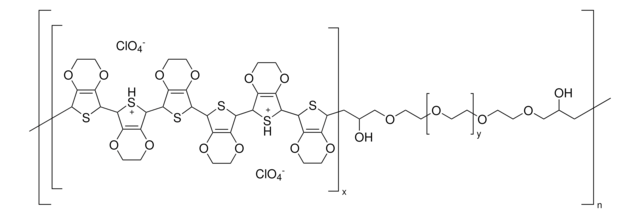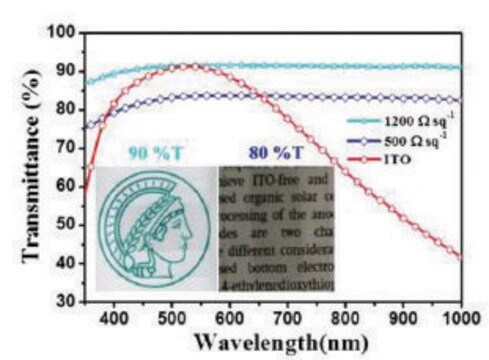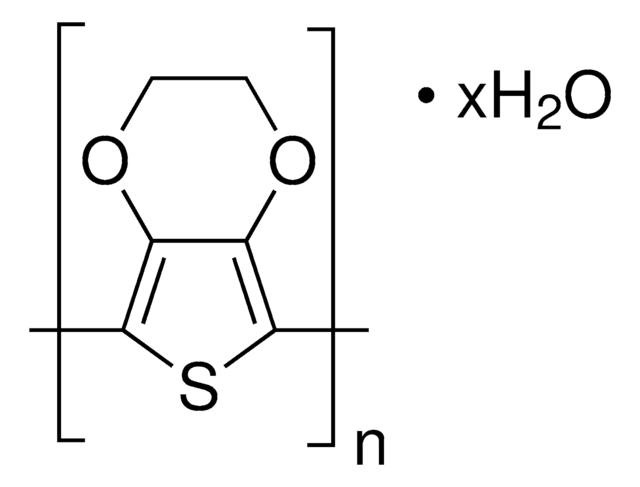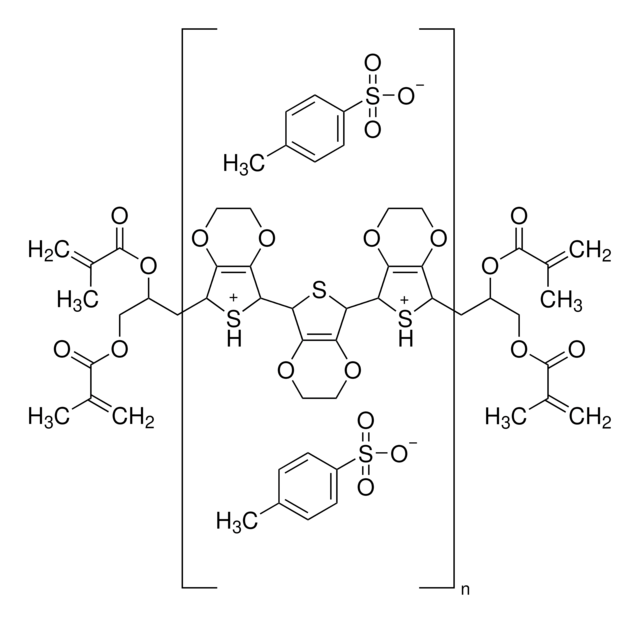560596
PEDOT:PSS
low-conductivity grade, 2.7 wt. % aqueous dispersion
Synonym(e):
PEDOT:PSS, Poly-(2,3-dihydrothieno-1,4-dioxin)-poly-(styrolsulfonat)
About This Item
Empfohlene Produkte
product name
Poly(3,4-ethylendioxythiophen)-poly(styrolsulfonat), 2.7 wt % dispersion in H2O, low-conductivity grade
Qualität
low-conductivity grade
Qualitätsniveau
Zusammensetzung
PEDOT content, ~0.14%
PSS content, ~2.6%
Konzentration
2.7 wt % dispersion in H2O
Verunreinigungen
<300 ppm Na
Partikelgröße
<200 nm, coeff var >95%
pH-Wert
1.2-1.8
Leitfähigkeit
~1E-5 S/cm
Viskosität
<20 cP(20 °C)
Lagertemp.
2-8°C
Suchen Sie nach ähnlichen Produkten? Aufrufen Leitfaden zum Produktvergleich
Allgemeine Beschreibung
Anwendung
Leistungsmerkmale und Vorteile
Verpackung
Signalwort
Danger
H-Sätze
Gefahreneinstufungen
Eye Dam. 1 - Skin Corr. 1
Lagerklassenschlüssel
8B - Non-combustible corrosive hazardous materials
WGK
WGK 2
Flammpunkt (°F)
Not applicable
Flammpunkt (°C)
Not applicable
Persönliche Schutzausrüstung
Faceshields, Gloves, Goggles, type ABEK (EN14387) respirator filter
Hier finden Sie alle aktuellen Versionen:
Besitzen Sie dieses Produkt bereits?
In der Dokumentenbibliothek finden Sie die Dokumentation zu den Produkten, die Sie kürzlich erworben haben.
Kunden haben sich ebenfalls angesehen
Artikel
Tutorial Lithography Nanopatterning at Sigma-Aldrich. Lithography, based on traditional ink-printing techniques, is a process for patterning various layers, such as conductors, semiconductors, or dielectrics, on a surface.
New conducting and semiconducting polymers for plastic electronics
Find advantages of inorganic interface layer inks for organic electronic & other applications.
Progress in Organic Thermoelectric Materials & Devices including high ZT values of >0.2 at room temperature by p-type (PEDOT:PSS) & n-type (Poly[Kx(Ni-ett)]) materials are discussed.
Unser Team von Wissenschaftlern verfügt über Erfahrung in allen Forschungsbereichen einschließlich Life Science, Materialwissenschaften, chemischer Synthese, Chromatographie, Analytik und vielen mehr..
Setzen Sie sich mit dem technischen Dienst in Verbindung.
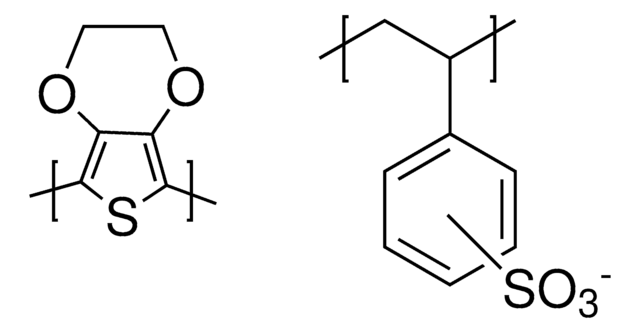
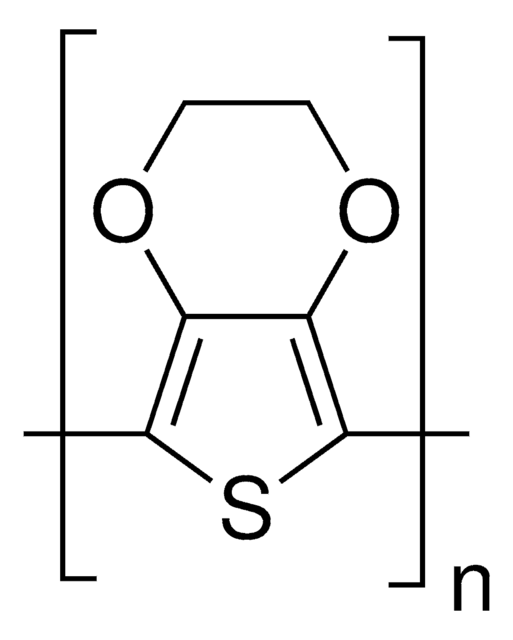
![2,3-Dihydrothieno[3,4-b]-1,4-dioxin 97%](/deepweb/assets/sigmaaldrich/product/structures/268/912/cdf638a8-0f41-4525-838f-0b60770b1999/640/cdf638a8-0f41-4525-838f-0b60770b1999.png)
